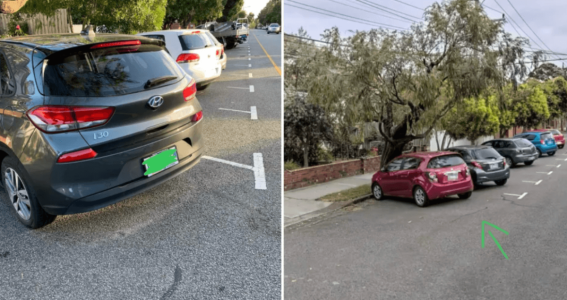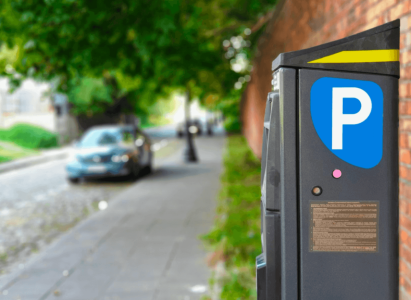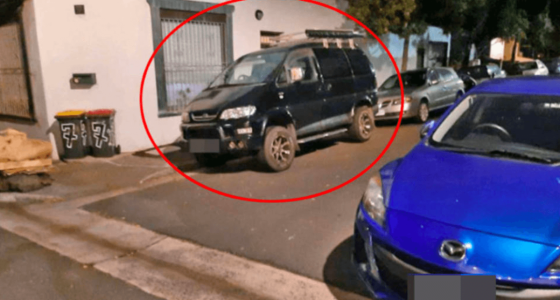Driver fined $92 for parking in 'legitimate' spot - sparks debate on social media
- Replies 17
Imagine getting a whopping $92 fine for parking in a spot that appeared to be perfectly legal… That's what happened to one puzzled driver who took to social media to share a photo of their car, and posed a simple question: would you have parked here?
The photo shows the car parked at the end of a row of car spaces, with a clear white 'T' painted on the right side, but not on the left. Confusing, right?
The driver explained that there were no signs indicating it wasn't a parking spot (such as a yellow line), and it wasn't blocking a driveway either. So, what was the problem?
The offence listed on the fine was '711 parked - not completely within a parking bay'. Talk about a conundrum!

The parking predicament has stirred up quite the discussion online. Can you blame the driver for being confused? After all, it's not every day you get slapped with a fine for parking in what seems like a legitimate spot.
Many people have jumped in to show their support for the driver, claiming they, too, would have assumed it was a parking spot. One user even pointed out that 'the line is still open. It would be a closed angle inwards if it weren't a park.'
Another user chimed in, saying, 'That's a parking spot for sure. There's no signpost indicating No Parking, and the markings on the road are open, indicating it's a spot.'
Some even went as far as encouraging the driver to contest the fine, highlighting the absence of no-parking signs and the fact that the spot wasn't blocking a driveway.
A third user even speculated that 'the T shape of the line is directing you to park near the driveway. Either the road marking is flawed, the council have an agreement with the house owner that parking so close is allowed, or it is a trap to raise revenue!'

As with any debate, there are always two sides to the story, and this parking fiasco is no exception. While many have shown their support for the driver, there are those who argue that it was not a parking spot due to the lack of bay markings on the left side of the car. They claim that parking bay lines should be clear and that drivers must park within a single bay.
One user raised a valid point, asking, 'What does the curb look like? What signage is there? How close are you to driveways, corners, etc.? What is actually to the left of your car?'
Another user also chimed in, saying, 'No, that's not a parking spot. You have to park between the bays marked, and in this case, no bay is marked where you are parked. So the infringement notice is correct.'
The original poster of the photo later revealed that they plan to contest the fine, stating that they are 'living paycheck to paycheck' and adding, 'I know I'm not in the wrong.'
It's understandable that receiving a fine can be a financial burden, especially for those who are struggling to make ends meet.
But will the driver's argument hold up in court? Only time will tell. It's clear that this parking spot has caused quite a stir, with even the most seasoned drivers left confused about what constitutes a valid parking spot.
Let's hope that this dispute is resolved quickly and fairly and that we can all learn a thing or two about parking regulations in the process!

It's not just the Melbourne driver who fell foul of the parking regulations - it seems that there are many other unsuspecting drivers who have found themselves in a similar predicament.
We recently reported on another incident where a driver was slapped with a staggering $362 fine for 'parking within 10 metres of an intersection with no traffic lights'.
The driver was understandably shocked at the exorbitant price of the fine. To make matters worse, after speaking to his neighbours, he discovered that none of them knew that parking in that spot was prohibited – yet he was the unlucky one who received the hefty fine.
It's incidents like these that leave many of us scratching our heads and wondering just how well-versed we are in the nuances of parking regulations. With fines reaching such high amounts, it's important for drivers to stay informed and be aware of any potential parking restrictions in their area.
To read the full story and find out more about the driver's ordeal, click on the link provided here. Who knows, it may just save you from a similar fate!

To our members, we ask you: Would you have parked in that spot? It seems like the argument is split down the middle, with some insisting that the parking spot was valid, while others believe it wasn't. What do you think? Do you believe the driver was in the right or the wrong?
Also, have you ever received a fine you felt was unjust? Feel free to share your stories and opinions with us in the comments!
The photo shows the car parked at the end of a row of car spaces, with a clear white 'T' painted on the right side, but not on the left. Confusing, right?
The driver explained that there were no signs indicating it wasn't a parking spot (such as a yellow line), and it wasn't blocking a driveway either. So, what was the problem?
The offence listed on the fine was '711 parked - not completely within a parking bay'. Talk about a conundrum!

A Melbourne driver received a $92 fine for parking in a confusing spot and sparked a lively debate online by asking if others would have parked there. Credit: Reddit, Google Maps.
The parking predicament has stirred up quite the discussion online. Can you blame the driver for being confused? After all, it's not every day you get slapped with a fine for parking in what seems like a legitimate spot.
Many people have jumped in to show their support for the driver, claiming they, too, would have assumed it was a parking spot. One user even pointed out that 'the line is still open. It would be a closed angle inwards if it weren't a park.'
Another user chimed in, saying, 'That's a parking spot for sure. There's no signpost indicating No Parking, and the markings on the road are open, indicating it's a spot.'
Some even went as far as encouraging the driver to contest the fine, highlighting the absence of no-parking signs and the fact that the spot wasn't blocking a driveway.
A third user even speculated that 'the T shape of the line is directing you to park near the driveway. Either the road marking is flawed, the council have an agreement with the house owner that parking so close is allowed, or it is a trap to raise revenue!'

The driver plans to contest the fine and has received encouragement from other users who believe there are grounds for contesting it. Credit: Unsplash/Stanisław Gregor.
As with any debate, there are always two sides to the story, and this parking fiasco is no exception. While many have shown their support for the driver, there are those who argue that it was not a parking spot due to the lack of bay markings on the left side of the car. They claim that parking bay lines should be clear and that drivers must park within a single bay.
One user raised a valid point, asking, 'What does the curb look like? What signage is there? How close are you to driveways, corners, etc.? What is actually to the left of your car?'
Another user also chimed in, saying, 'No, that's not a parking spot. You have to park between the bays marked, and in this case, no bay is marked where you are parked. So the infringement notice is correct.'
The original poster of the photo later revealed that they plan to contest the fine, stating that they are 'living paycheck to paycheck' and adding, 'I know I'm not in the wrong.'
It's understandable that receiving a fine can be a financial burden, especially for those who are struggling to make ends meet.
But will the driver's argument hold up in court? Only time will tell. It's clear that this parking spot has caused quite a stir, with even the most seasoned drivers left confused about what constitutes a valid parking spot.
Let's hope that this dispute is resolved quickly and fairly and that we can all learn a thing or two about parking regulations in the process!
Key Takeaways
- A Melbourne driver received a $92 fine for parking in a spot that appeared to be a legitimate bay but had only one set of bay markings.
- This sparked a debate online, with some sympathising with the driver and claiming it was a valid spot, while others argued it was not due to the lack of markings on one side.
It's not just the Melbourne driver who fell foul of the parking regulations - it seems that there are many other unsuspecting drivers who have found themselves in a similar predicament.
We recently reported on another incident where a driver was slapped with a staggering $362 fine for 'parking within 10 metres of an intersection with no traffic lights'.
The driver was understandably shocked at the exorbitant price of the fine. To make matters worse, after speaking to his neighbours, he discovered that none of them knew that parking in that spot was prohibited – yet he was the unlucky one who received the hefty fine.
It's incidents like these that leave many of us scratching our heads and wondering just how well-versed we are in the nuances of parking regulations. With fines reaching such high amounts, it's important for drivers to stay informed and be aware of any potential parking restrictions in their area.
To read the full story and find out more about the driver's ordeal, click on the link provided here. Who knows, it may just save you from a similar fate!

A man was penalised for 'parking within 10 metres of an intersection with no traffic lights' in a usually parked spot with no signs suggesting it was illegal. Credit: Damian Seagar.
To our members, we ask you: Would you have parked in that spot? It seems like the argument is split down the middle, with some insisting that the parking spot was valid, while others believe it wasn't. What do you think? Do you believe the driver was in the right or the wrong?
Also, have you ever received a fine you felt was unjust? Feel free to share your stories and opinions with us in the comments!







